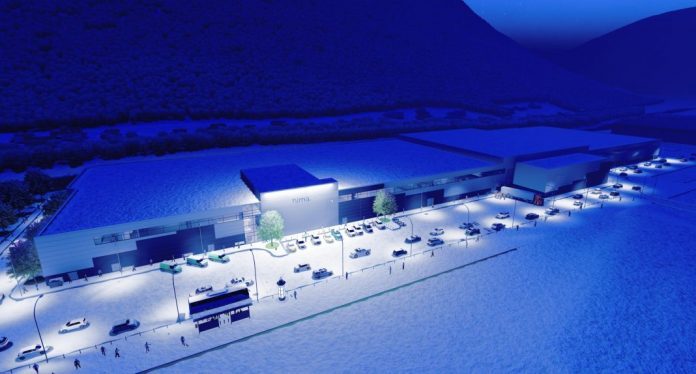Hima Seafood (formerly Salmofarms) wants to farm 9,000 tonnes-a-year of it.
Salmofarms, which wants to produce land-based trout in Telemark, Southern Norway, has applied for an extension of its emission permit.
In its application letter from the 8th of October, the company said it had undergone “a number of changes and significant developments in the years 2019/2020.” The letter was signed by Preben Asbjørnrød, who took over as CEO of the company last year.
Construction in 2021
But now it turns out that there have been more major changes in the company, even after the letter was sent to the county governor. Salmofarms has changed its name to Hima Seafood, and the new CEO is Sten Falkum. He has experience from a number of aquaculture and finance companies. Asbjørnrød, on the other hand, is employed as the technical manager of the company and will have the builder’s responsibility when the construction process starts.

“The goal of Hima Seafood is to start construction in May 2021,” Falkum told SalmonBusiness.
The company has also hired Kristian Sjuve as CFO. Sjuve worked for several years in the same role at Komplett Bank. In addition, Hima Seafood has brought in a new head of fish with 40 years of experience in farming salmon and trout as well as considerable RAS experience, according to Falkum.
“The newly hired head of fish currently leads a land-based facility,” said Falkum.
9,000 tonnes of trout annually
Hima Seafood will also produce trout instead of salmon, which was the original plan. Fully developed, the facility will produce around 9,000 tonnes of trout annually.
Falkum believes that trout have several advantages in land-based fish farming, both production-wise and market-wise.
“From a farming perspective, trout is a very robust fish that grows rapidly and thrives in freshwater. The production time is estimated at 17 months from fry to an ideal average weight of around four kilograms,” Falkum said, continuing:
“From a market perspective, trout are an exciting species of fish, and Hima has a clear goal of producing a premium trout. In the premium salmon segment, there are several good options for customers to choose from, such as Salma. Hima will now establish a high-quality trout product in this category,” added Falkum.
EUR 55 million
The investment framework for the first construction phase of the plant will be between EUR 55 million and 73 million. The new ownership group has so far invested EUR 6 million in the project.
“We are now working on some concrete options around financing the project which also involves further investments from the current owners,” said Falkum.
When the facility is ready, the partner salmon and trout farmer Osland Havbruk will provide roe deliveries.
“The trout strain which will be used on Rjukan is the Osland strain, which Osland has developed since 1963. Osland intends to develop roe from broodstock sourced from the Rjukan facility,” said Falkum.
The company has also established a close partnership with seafood sellers Villa Seafood, which will be responsible for the distribution and processing strategy of the finished trout product.
“We have thus succeeded in attracting a strong team from the industry, with deep and broad expertise in fish farming, sales, marketing and branding,” said Falkum.

New professional assessment
As a result, Hima Seafood has undertaken a complete redesign of the facilty, and solutions are also being made to use by-products from the site such as sludge, ensilage, fish intercepts into new value chains, such as omega 3 production as well as fertilisers and biogas.
In a response letter to the land-based farmer, the county governor has informed that before the emission license can be extended or possibly changed, a new professional assessment must be made about the influences of the fish farm’s trout.
“The facility is designed with a high degree of biosecurity in production, and with an extensive wastewater treatment plant. This ensures that the site does not add anything undesirable to nature. The emission permit for the plant is in place, but confirmation is needed that the plant does not affect a new site that is in the recipient. We are in the process of confirming that the facility does not affect the new site,” concluded Falkum.
European market
In terms of the trout market, fish farmer Blom Fiskeoppdrett wrote in its annual report “that the market situation has been affected by the pandemic, especially for trout”.
“Great resources are being put into finding alternative markets for trout sales. New overseas markets have been developed, but the company will still have to sell large parts of the trout to the European market. The status of trout in the European market is challenging and it has not been possible to achieve the same prices of trout as salmon,” Blom Fiskeoppdrett wrote.

